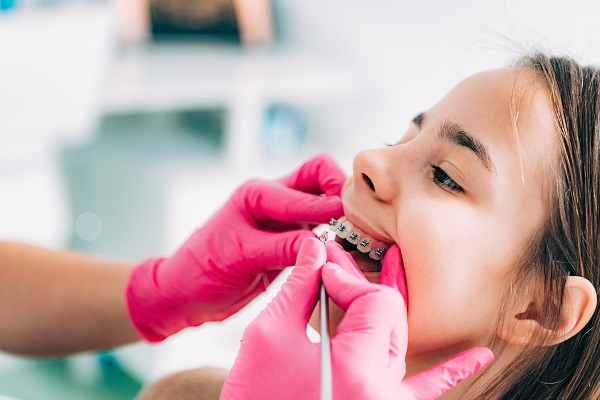How Kids’ Braces Have Improved

Advancements in dental technology have allowed those with oral problems to repair their smile, especially in the case of kids' braces. Children have benefitted from braces since the early 20th century, as this dental gear can straighten crooked or misaligned teeth, even in small patients. Much has improved over the years, allowing orthodontists to fit their patients with these aligners in a way that is much more comfortable than it was 20 or even 10 years ago.
A brief history of children’s braces
Some examples of braces date back to the time of the ancient Greeks. When it comes to modern versions, children’s models became more in style during the 1970s. Early examples featured more parts than modern styles and tended to cause problems:
- Reduced ability to taste food
- Lip and tongue discomfort
- Ill-adjusted wires and brackets
Fortunately, these issues tend to be not as common today, as several improvements have been made to make kids’ braces more comfortable than ever.
Arch wires
One advancement that makes children’s braces more comfortable today is the type of arch wires used. When braces are fitted, this is the wire that prevents the teeth from shifting out of place any further and works to straighten them at the same time. Stainless steel wire was most commonly used in the 1950s-1970s; however, today, more flexible alloys are used to make the process more comfortable, especially during the first few weeks of wear.
Smaller brackets
Thirty or 40 years ago, children who wore braces had a hard time concealing them because of the metal rings that were bonded to the hardware’s brackets. These rings kept the braces’ brackets in place were larger than the ones used by orthodontists today. They have since been replaced by bonded braces, where the brackets adhere directly to the affected teeth. These pieces are smaller and simpler to adjust, which can increase comfort for those who wear them.
Different styles
Children did not have much choice as to what their braces looked like until recently, when advances in oral care allowed fashion to play a role in straightening teeth. Now kids can choose from a variety of wire colors, bracket shapes and different tones to complement their tastes in attire and coloring. This advancement can be helpful for shy children who are not confident about the prospect of wearing braces, as designing their own can take some of the fear and doubt out of the experience.
Fewer X-rays
Children who wore braces in the last 30 years or so were likely X-rayed often, especially during the fitting process. Digital imaging has replaced some X-ray practices, as molds and other castings can now be achieved with simpler computer scans. Not only can this make the initial fitting appointments less stressful for young dental patients, but the reduced use of radiation should set parents’ minds at ease as well.
Conclusion
Kids' braces have changed a great deal since their use became popular during the mid-20th century. Improved technology, wider style variety and greater comfort have made this dental gear simpler to wear than ever.
Are you considering kids' braces in the Middletown area? Get more information at https://www.hvkidsmiles.com.
Check out what others are saying about our dental services on Yelp: Kid's Braces in Middletown, NY.
Recent Posts
Curious about pediatric root canals? Read on to learn more about this common procedure. If your child needs a pediatric root canal, it might be a stressful and anxious time for both of you. However, you as a parent must prepare them. The treatment is often needed if the tooth has extensive decay or infection…
A pediatric root canal is a restorative procedure that can preserve the overall health of a child’s smile. This applies even if the affected tooth is a primary tooth. After the procedure, a pediatric dentist will likely place a dental crown on top of the treated tooth. Crowns not only protect the treated tooth but…
Getting ready for a pediatric root canal is crucial if your child is to have a pleasant treatment experience. A damaged pulp causes serious pain. Even if extraction is an option, keeping the baby tooth intact is always a priority. Knowing what this procedure has in store can prepare your child well for it. Here…
Your child may need a pediatric root canal for an infected baby tooth. Research shows that many parents think that this is not necessary since the baby tooth will fall out anyway. But baby teeth play a vital role in your child’s dental development and health. Knowing the signs your child may go through a…


